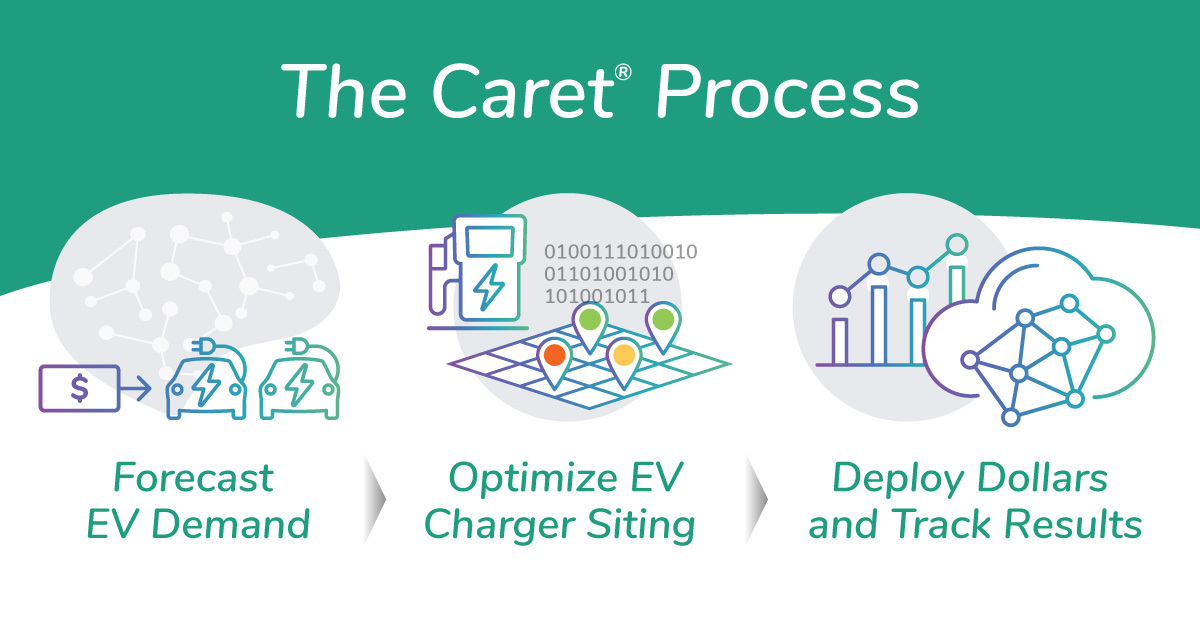What States Need to Know About Planning an EV Charging Network

With $5 billion in federal infrastructure funds available for electric vehicle (EV) charging, states have an unprecedented opportunity to kick EV adoption into high gear.
But the clock is ticking on accessing the funds, which come from the bipartisan Infrastructure Investment and Jobs Act (IIJA). States have until August 1 to submit an EV Infrastructure (EVi) Deployment Plan outlining how they would use the funds, following Federal Highway Administration guidance.
Some states have been planning for EVs for years. The California Electric Vehicle Infrastructure Project (CALeVIP) launched in 2017 with a $250 million program budget, and CSE was recently awarded an additional $250 million to support EV infrastructure deployment.
Many states, however, are not that far down the road. And with EV chargers being as much about electricity as about roadways – a fact highlighted by the creation of a federal Joint Office of Energy and Transportation – state transportation departments have a challenge on their hands.
3 steps to developing an EV charger plan
The key questions states need to address, quickly, are how much charging will be needed, where it should go, and when and how should it be installed. The goal is to get in a Goldilocks zone of just the right amount and types of chargers in the right place at the right time.
1. How much charging do you need?
The first question might seem like simple math. Divide the federal dollars allocated to each state by the average cost of a charger and that’s how many you will install. Right?
Well, that could lead to long lines at too few chargers or cobweb-covered chargers that were built too far ahead of demand. (Research suggests chargers should be in place slightly ahead of EV deployment to support market transformation.) Not to mention that the average cost of a charger varies significantly depending on the type and installation costs vary even more depending on local conditions, including any required electric system upgrades.
To prioritize the type and numbers of chargers needed, start by forecasting EV sales by state over time. To do that, data scientists at the Center for Sustainable Energy (CSE) developed the Caret® EV Analyzer*. It is grounded in behavioral economics, sociotechnical transition theory and the science of diffusion of innovation to account for the many barriers to adopting new technology.
2. Where should chargers go?
Federal guidelines call for charging to be installed no more than 50 miles apart and no more than 1 mile of driving distance from Alternative Fuel Corridors. States have until May 13, 2022, to nominate additional highways to receive this designation. That leaves plenty of territory for potential charging locations.
The guidelines also call for creating a “convenient, reliable, affordable, and equitable charging experience for all users.” Carefully planning charging to make the most efficient, effective and equitable use of federal funds means ensuring the needs of rural, underserved, and disadvantaged communities, including those without access to home charging, are met.
Think of all the potential users of publicly available EV chargers – commuters, people without dedicated parking spots with access to electricity long-distance travelers (for Thanksgiving at grandma’s), tourists and more. Other considerations and constraints include traffic patterns, demographics, where EV chargers already are and where utility infrastructure can easily support a charger.
That’s a lot to juggle.
To solve this puzzle, states need to create a map for optimally placing chargers that considers local requirements and priorities. One option is CSE’s Caret EVi Planner, which layers relevant data into geospatial mapping software so that policymakers and planners can visualize 60+ factors such as current charging stations, retail areas, multifamily housing and median income. Then Caret uses multi-criteria decision analysis to weight a state’s, county’s or city’s unique mix of priorities and rank charger sites based on those priorities.
The result is a customized, interactive map and a list of sites best suited for chargers based on the stated priorities, pinpointed to within a third of a square mile. Caret EVi Planner also dynamically recalculates site rankings as choices are made, helping planners rapidly iterate scenarios.
3. When and how should chargers be deployed?
The IIJA’s National Electric Vehicle Infrastructure (NEVI) funding program is a five-year program, so creating a plan is just the first step.
States will need to track and report on the results in compliance with IIJA requirements and update their plans annually. These updates create opportunities to learn from and apply ongoing analysis of charging data. Better data will lead to better decisions. Once planners can see which charging is being used, how and when, they can evolve and optimize their deployment plans over time.
Deploying federal dollars and matching them with the 20% nonfederal funds required can be accomplished in a number of ways. Some states may choose to follow California’s model of an incentive program that leverages additional funding from utility, other government or private sector partners. This would fulfill the federal program’s call for public-private partnerships and amplify the impact.
Objective, data-driven analysis is needed
Just as motorized vehicles overtook horse-drawn carriages, electric vehicles are poised to be the future of transportation – if barriers like consumer confidence in access to charging are addressed.
Resources
Joint Office of Energy and Transportation
Oversight Recommendations, Levin Center at Wayne Law Symposium
*CSE’s team of researchers, data scientists and EV experts developed the Caret Platform to support a data-driven approach to accelerating EV adoption and EV charger deployment. CSE leveraged its deep domain experience administering over $1 billion in EV incentive programs that have reached nearly 30% of all EV buyers in the U.S. As a nonprofit with no shareholders and no ties to specific vendors or technologies, CSE provides objective analysis to local and state governments to efficiently, expeditiously and equitably deploy EV charging infrastructure.

